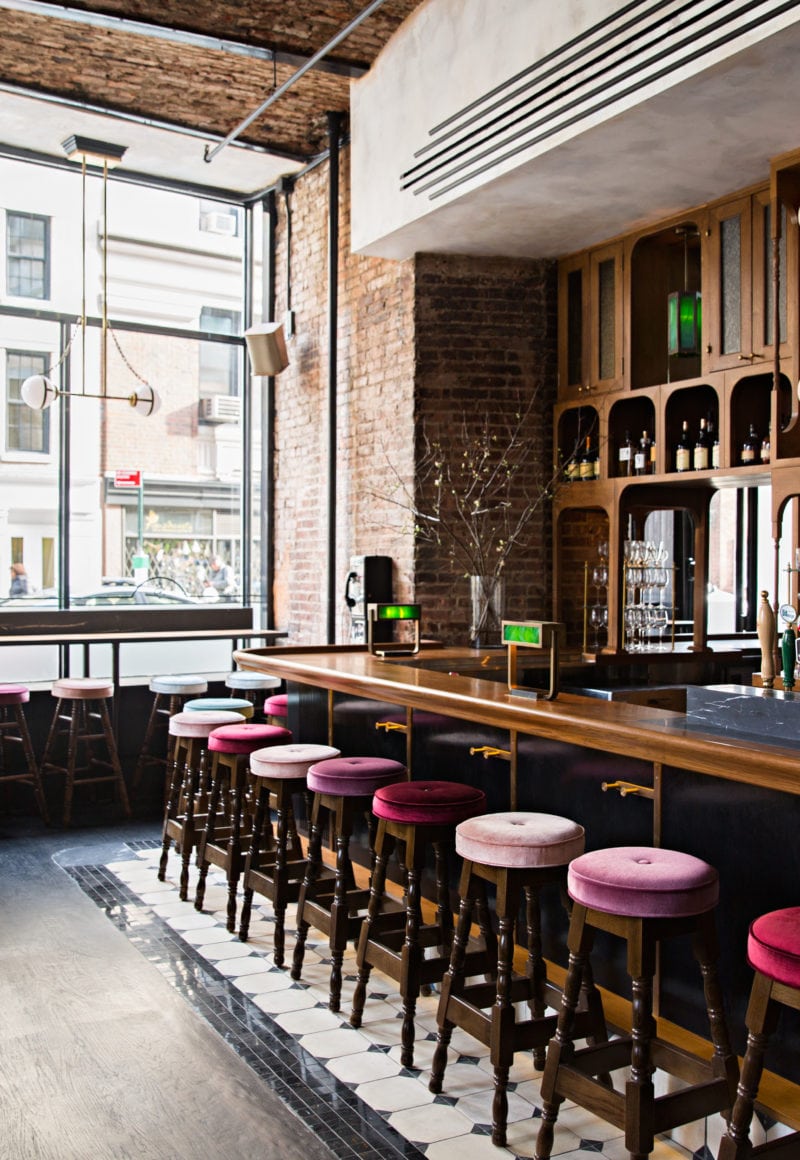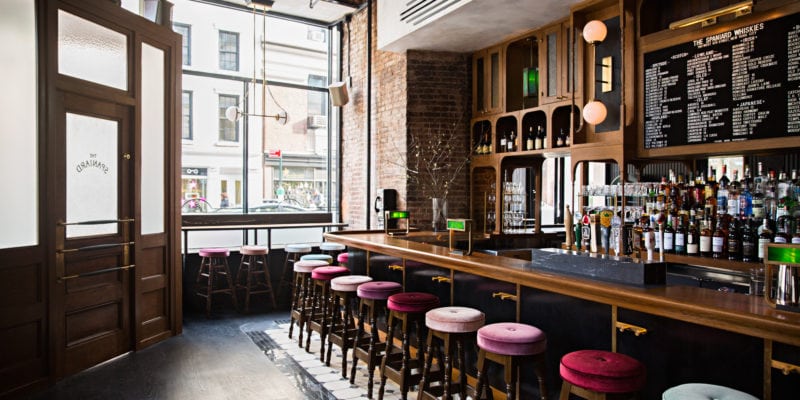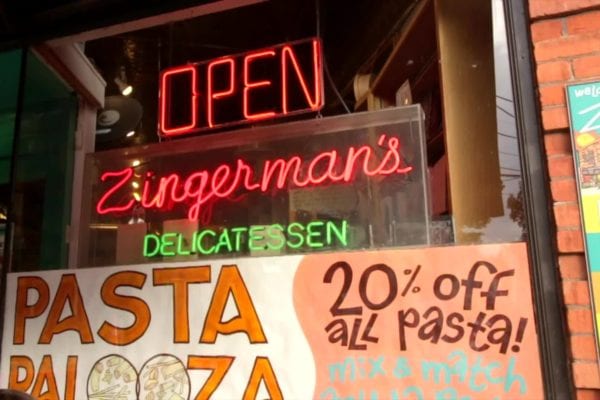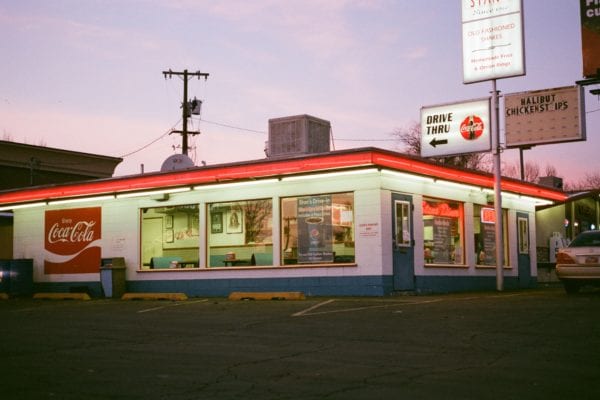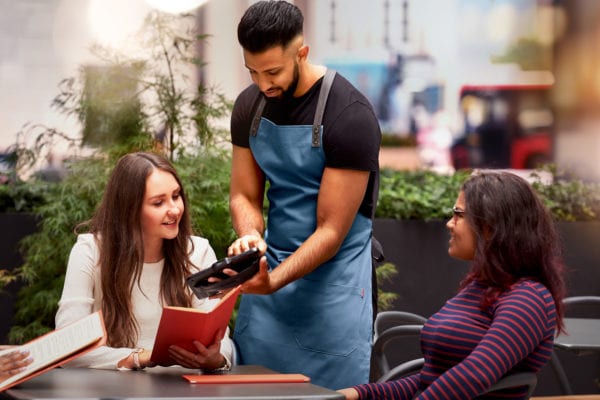Skift Take
Restaurants and bars embrace private-label spirits not as a mere flash-in-the-pan gimmick, but as a thoughtful, passionate avenue to heightening the guest experience.
— Alia Akkam
It started with the Penicillin, the drink New York barman Sam Ross dreamed up at the fabled, dearly departed Lower East Side speakeasy Milk & Honey back in 2005. The Scotch-ginger-lemon-honey concoction, a vital part of the modern-classic cocktail canon that is riffed at bars around the world, is one of Mikey McFerran’s favorite tipples. McFerran, and his partner Mark Gibson, co-owner of New York hangouts the Penrose, the Wren, the Bonnie, Sweet Afton, Wilfie & Nell, and Bua, opened whiskey-centric The Spaniard last year in the West Village, and fittingly he added—with Ross’s blessing—the famed Penicillin to the menu.
“Sam’s original version used Compass Box whisky, so we stuck to that when we launched. It’s one of the best-selling cocktails at the Spaniard, so we’ve now become Compass Box’s best-selling account on the Eastern seaboard,” McFerran explained. “When Compass Box approached us about collaborating on a whisky together, we knew that they were among the best and most respected blenders in the world, so it was a no-brainer for us.”
By joining forces with John Glaser, the founder of London-based Compass Box and whiskymaker known for his experimental techniques, McFerran smartly reinforced his vision of the Spaniard as a destination for brown spirits. From the beginning, the Glasgow-reared, whisky-smitten McFerran set out to make the spirit “the focal point” of the Spaniard. The bar’s interior designers, Brooklyn-based Home Studios, crafted a stained white oak and black felt letter board, inspired by diners of yore, highlighting some 100 varieties on offer.
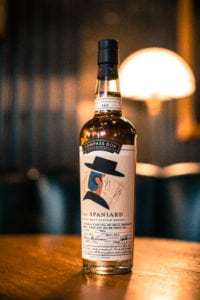
The bespoke Compass Box Scotch, a blend of four single malts ranging from 10 to 19 years old, perfectly dovetails with McFerran’s mission of showcasing both familiar and unconventional bottles. Dominated by a whisky aged in sherry, its dried fruit notes also pave way the way to subtle peat, a seductively accessible entrée to Scotch’s more complex profiles. Just 360 bottles were released in June—available at the Spaniard, its sibling bars, and for $200 at retailers like Astor Wines & Spirits and Park Avenue Liquor Shop. Its elusive, get-it-while-you-can nature only ratchets up the appeal. Some whiskey buyers prefer “holding on to their bottles, but from my point of view you’ll want to drink this now because you’re not going to get a chance to drink it that often. It’s special. Jameson is always going to be there,” said McFerran.
Community Ties
There are more than 200 whiskies—from well-known Elijah Craig to the sorghum rendition made at High Wire Distilling in Charleston, SC—on offer at Succotash, chef Edward Lee and KNEAD Hospitality + Design’s Korea-meets-the-South restaurant in Washington D.C.’s Penn Quarter. But it’s the Succotash Maker’s Mark Private Select, a bourbon made in partnership with the acclaimed Loretto, KY, distillery, that is available only at Succotash and the restaurant’s outpost at the National Harbor development in Maryland. Likewise, North Carolina chef Vivian Howard of the restaurants Chef & the Farmer and Boiler Room in Kinston, as well as Benny’s Big Time Pizzeria in Wilmington, embarked on a collaboration with Jefferson’s Bourbon. For the past year the brown spirit’s been aging, it was recently bottled, and in the coming months it will come to market, something for loyal guests to look forward to during dinner at one of Howard’s restaurants.
Following the lead of myriad private-label wines and beers, proprietary spirits are increasingly appearing on menus and back bars. Those who have taken this route find it a striking, worthwhile investment because of the value it brings to, and the associations it forges with, customers.
Not every establishment touting proprietary booze has a fairy tale past to draw from like The Rieger in Kansas City. Patrons of the restaurant co-owned by bartender and restaurateur Ryan Maybee, as well as his sister speakeasy bar Manifesto—both found inside the circa-1915 Rieger Hotel—will discover bottles of J. Rieger & Co. vodka, gin, whiskey, amaro, and even a spirit distilled solely from Kansas City’s own Boulevard Brewing Company beer. Sipping a cocktail like Manifesto’s Niall, then, made with that very whiskey, Cappelletti amaro, Punt e Mes vermouth, orange bitters, and Kübler absinthe, is a chance to take a deep dive into the late 19th century, when Austrian-Hungarian immigrant Jacob Rieger first introduced his eponymously named distillery to Kansas City. Later it expanded into a thriving mail-order business and the hotel, where a mural of the old distillery’s Monogram Whiskey remains emblazoned on the building. Maybee was keen to honor a chapter in the city’s boozy history by resuscitating the distillery that shuttered in the wake of Prohibition, and in 2014 he and Andy Rieger, a descendant of the Kansas City pioneer, made the dream come true. Although the new incarnation of the J. Rieger & Co. portfolio is also available beyond the Rieger and Manifesto, the distillery’s origins and rebirth culminate in a priceless urban narrative that mesmerizes guests.
A bar doesn’t need to be shaped by a riveting history, though, in order to tell a powerful story propelled by community. Chef/owner Sarah Grueneberg’s Monteverde Restaurant & Pastificio in Chicago’s West Loop, for example, is just a few blocks away from CH Distillery. Once Grueneberg decided she wanted to serve an exclusive, not-too-sweet amaro at her Italian restaurant, she turned to CH to produce an umami-driven version that’s light and silky on the palate. “CH is our neighbor. We love their spirits and wanted to keep ours locally produced,” she said. Immediately, Grueneberg and bar manager Justin Kadabarek sat down with the CH Distillery team and got to work, blending different flavor distillations at the table. Fresh tomato, artichoke stock, basil, squash, and pumpkin were all incorporated into the recipe, and for natural sweetness Grueneberg craved, Acetaia San Giacomo’s Balsamela apple balsamic and Saba unfermented grape must.
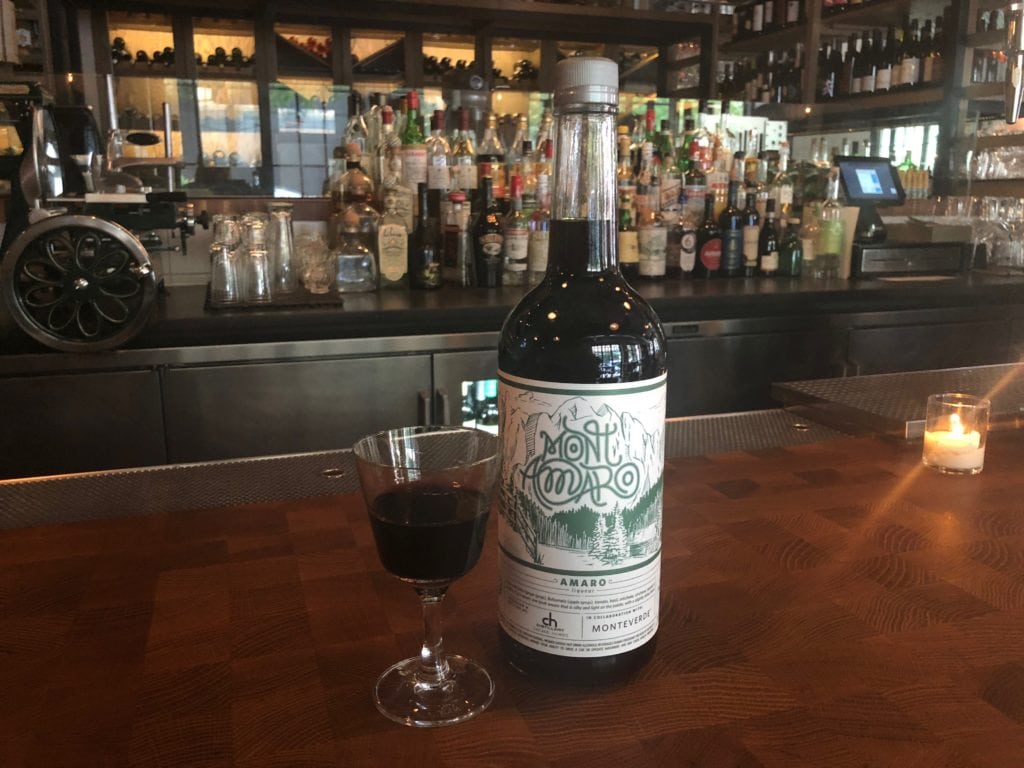
The MontAmaro is currently available as a $9 two-ounce pour to unwind with after, say, wok-fried tagliolini arrabbiata with Texas gulf shrimp and hot pepper oil, or in the form of the $14 Twin Peaks cocktail with Galvanina chinotto soda and Montanaro grappa.
New York-based Quality Branded is gradually releasing a trifecta of limited-run beverages at select restaurants this year. An in-house Quality Wine Bordeaux from France’s Château Fonbadet in Pauilac was followed up with a Quality Beer made at Brooklyn’s Interboro Spirits & Ales. Next, arriving in late summer or fall, is a Single Barrel Straight Rye made in tandem with Allen Katz of New York Distilling Co. in Brooklyn. The rye was grown in New York, aged for at least three years, and hand selected by the Quality crew. “The idea here was to create a suite of three quality products made by three different producers we love, but that are tied together by a similar graphic look that reflects our branding and aesthetic,” said Quality Branded beverage director Bryan Schneider. Like Interboro’s beers, Schneider has long been a fan of the spirits made at Katz’s distillery. “I knew I wanted to work with local producers here in NYC that we have personal connections with,” Schneider added. Teaming up with Katz, who he’s known and respected for years, makes the relationship all the more poignant.
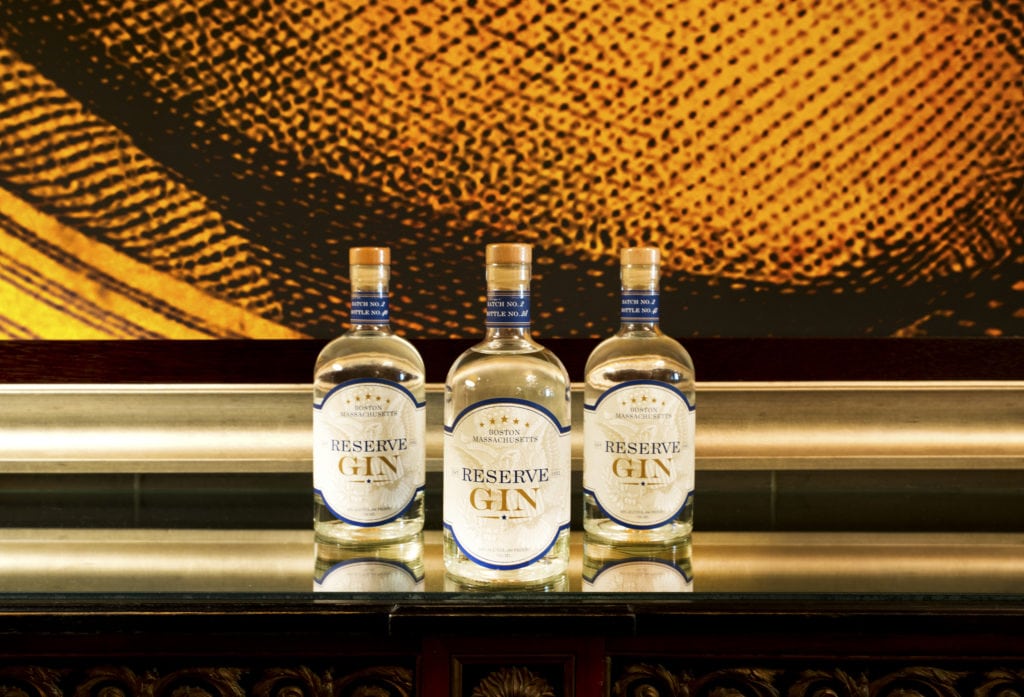
Emotional Appeal
Initially, Bully Boy Distillers turned down the Langham, Boston, when the Financial District hotel inquired about a custom gin—a nod to the London flagship property—because the local distillery hadn’t yet hatched a private-label offering. “Eventually, they agreed to go on this adventure with us,” said the Langham’s food & beverage director Victor Calzada, pointing out how Bully Boy liquors were already well represented at the hotel’s outlets BOND Restaurant and Lounge and the Reserve. The Reserve Gin, a grapefruit-forward expression with notes of ginger flower and rose petal, is poured at both bars, woven into staples like the $14 Martini, or melded with St-Germain, grapefruit, lemon, orange, bitters, and Champagne in the $16 Fitzgerald. It’s even a draw for one of the Langham, Boston’s overnight packages.
“Since the gin so closely reflects the heritage of the hotel, it adds another layer to our storytelling and enhances our brand. It not only has increased our bar sales, but has also been a valuable marketing tool,” said Calzada, noting that some regulars come to BOND and the Reserve just to drink the gin, while others are being turned on to the spirit in general through the Bully Boy creation. “They can taste something that isn’t available anywhere else, and it allows them to learn about the hotel and our history. It has also become the centerpiece of our cocktail menu, when most restaurants and bars aren’t putting that focus on gin,” added Calzada.
Customers are also top of mind for Schneider. “I think of our guest experience first when I think of what value these kinds of partnerships bring,” he said. Conjuring a signature Quality Branded experience, encompassing décor, service, and menu, is essential. Products like the forthcoming rye, “made specially for our restaurants, helps us to further develop that signature experience.”
Such collaborations need not be costly endeavors either. Other than the price of promotional postcards, McFerran and his team didn’t spend money on the Spaniard’s new Scotch. McFerran was involved deeply in the nine-month ideation and production process, from tasting to weighing in on the logo, but there was “no expense to us; it’s a Compass Box product. But we also don’t profit from it, so it’s more a partnership that allows us to get our name out among the whiskey nerds and into good liquor stores.”
CH Distillery made the initial investment on Monteverde’s amaro through testing and tasting, and the restaurant purchased the product and took care of graphic design costs. Grueneberg is delighted with the results and her customers who relish MontAmaro’s surprising savory notes. It’s an extension of the Monteverde experience, she continued: “We have the ability to transform some of our beloved Italian ingredients and use them in our cocktail program. Now, if guests want to come for dessert and amaro it all can be uniquely Monteverde,” she explained. “Plus, since it’s our own, people are more willing to take that initial amaro journey.”

